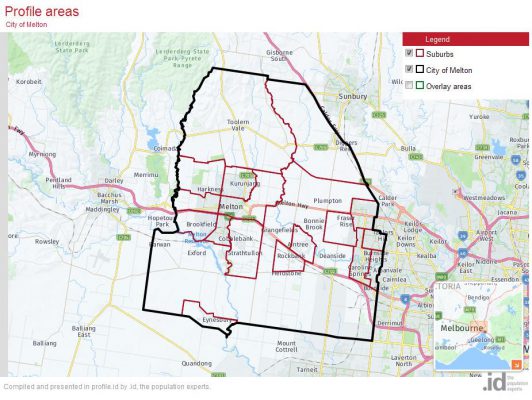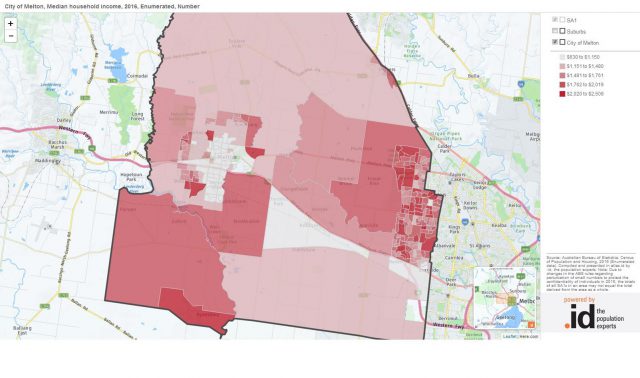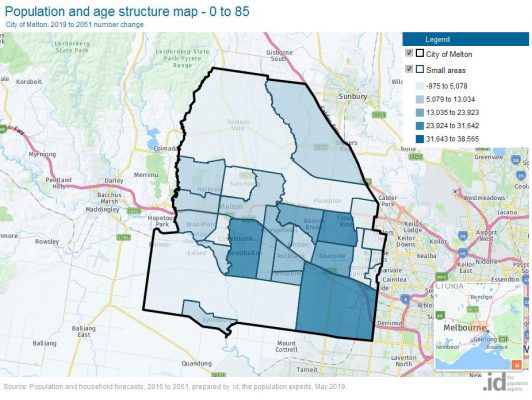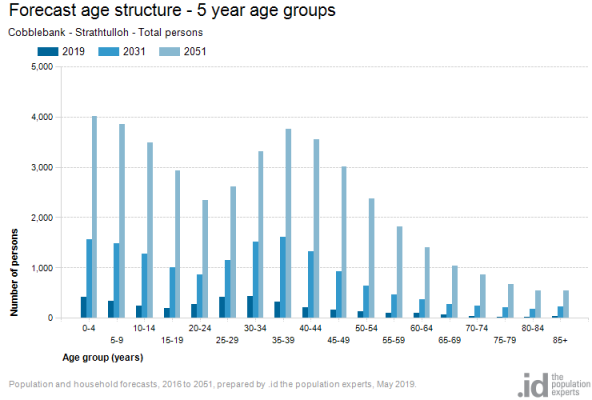Melton is one of the fastest-growing areas in the fastest-growing city in Australia. Like other growth areas on the urban fringes of our burgeoning capital cities, the headline figures of population growth are staggering, and forecasts suggest this surge isn’t slowing any time soon.
This must be an intimidating prospect for local planners – housing this future population will be, in and of itself, a significant challenge. But what type of housing will the community need? And what about other services, for children and the elderly? With so much growth, it’s easy to forget that ‘growth’ isn’t the singular and defining story of the area. Within Melton, there are established communities, with different population age structures to those in the other, fast-growing parts of the Local Government Area.
In this piece, Glenn explores the implications of these demographic nuances, calling for local planners to consider the differences between the communities that make up their City as they plan for the future needs of their community.
Much has been written about Melbourne’s incredible growth over the past decade or so. Victoria has been Australia’s fastest-growing state for the past 6 years running, and Greater Melbourne makes up over 80% of that growth most years. Within Greater Melbourne, almost all areas are growing strongly, but none more so than a few urban fringe areas typified by the City of Melton, which has just had large areas of new land opened up and designated for development.
We have worked closely with the City of Melton for a number of years, to help them understand the current and future population of their region as they navigate and plan for extreme annual growth.
The City of Melton, North West of Melbourne

What is driving the growth of Melton’s population?
Melton’s population in 2016 was 141,420, adding 28,777 people, or 26% to its population in 5 years. Not only has the number of new dwellings been growing (adding 21%, or 8,000 dwellings in 5 years), but the number of people per dwelling is going up, with average household size at 3.02 people per dwelling in 2016, about half a person above the Victorian average. Melton is growing by both natural increase (accounting for about a quarter of total population growth), and movement in from other areas (internal migration) – the big contributor is the nearby City of Brimbank, where people are moving into the new housing areas in large numbers. Kids who grew up here are moving further out when they buy their own homes – a regular trend for many years in growth corridors of our capital cities. Melton is also getting a lot of overseas migration, with nearly 6,000 people moving in from overseas over 5 years – though much of the diverse population is older migrants updating their housing.
In the last two years, population estimates show that the City of Melton has added 15,293 people, about 7,500 people per year – 5% p.a. growth rate, an acceleration from the previous 5 years. To put this in perspective, the City of Melton is adding more people than the ACT is adding every year, and nearly as much growth in absolute numbers as the whole of South Australia.
A tale of two cities
Sitting on the western edge of Melbourne, Melton is almost a tale of two cities in itself.
The older town of Melton, around 40km west of Melbourne is a lower socio-economic area that has been growing for some time (into areas like West Melton and Kurrunjang), with a distinct identity of its own, and physically separate from Melbourne. And the growing eastern part of Melbourne, areas like Caroline Springs, Taylors Hill and Hillside, which have grown enormously over the past 20 years, and directly adjoin the western suburbs of Melbourne. These areas are higher socio-economic, much more culturally diverse, with many professionals and office workers working in the City of Melbourne and other inner parts of the city. The maps in our social atlas for Melton, including those showing household income, and the distribution of people speaking a language other than English, really show the story.


The emergence of a growth corridor
There is another story here, which is that most of the rural areas in between the eastern part and western parts of Melton have now been designated as a growth corridor and are starting to fill in. The question is what will these areas look like in future?
Our population forecasts go to 2051 for Melton, which is quite a long time horizon. Council needs to plan for a very large amount of growth, with the City forecast to hit 485,000 people at that time – which is almost triple the current population. Most of this growth goes into the new suburbs in between old Melton and Caroline Springs. These suburbs have names even Melbourne locals have probably never heard of – places like Cobblebank, Aintree, Grangefields and Fraser Rise – but these suburbs are all expected to have populations of more than 15,000 people each within the timeframe of the forecast. The little hamlet of Rockbank, familiar to many as a dot on the map on the way to Ballarat, is expected to be home to 22,000 people.
This is the growth pattern within Melton

And this is what the future age structure of one of the new growth areas, Cobblebank-Strathtulloh, is expected to look like in 2051.

It is still, at this time, full of families with young children – who are the people who usually buy into new growth suburbs like this. Generally not so many people in their 20s, and not so many elderly, though certainly large relative increases in all these groups as well.
But it’s not all about growth. Areas which were settled in the past 20 years, like Caroline Springs, a major growth centre for some time, are actually expecting a decline in population. This happens as the children of those families who moved in recently age to a point where they leave home, and they typically leave the area, going into the city, heading overseas, or buying their own home and having their own family in a growth centre further out. This has been the pattern in Australian cities for many years, and it leaves Caroline Springs with an age structure looking like this:

As you can see, there are expected to be fewer children, fewer parents in their 30s and 40s, and nearly a 10-fold increase in people over the age of 80.
Even suburbs which are only just starting to be developed now, given the timeframe of the forecast, show this trend later in the forecast period. Fraser Rise is a great example of this, growing enormously right now and will continue to do so for the next 10 years. It grows to a peak population, and then ages, as the children start to leave home there. So by the end of the forecast period it’s starting to look like Caroline Springs, with the increases in the older groups – both among adults and among older children. It’s like a wave of population moving outwards in a corridor – and populations require different services at different times in these areas.

These are patterns which are repeated in many recently developed suburbs around the nation. Many Local Government Areas on our urban fringes are in the same situation as Melton, with a mix of suburbs at different stages in the suburb life cycle.
There is a temptation to think it’s all about growth and decline, but paying attention to the changing age structures and the differences between small areas is always important. As some parts of the council area will experience demand for new schools and childcare, others will need aged care and disability services. It’s a significant challenge, but also a great opportunity to recognise the cyclical nature of our communities and respond with policy and planning that reflects the future demographic profiles of these communities.














